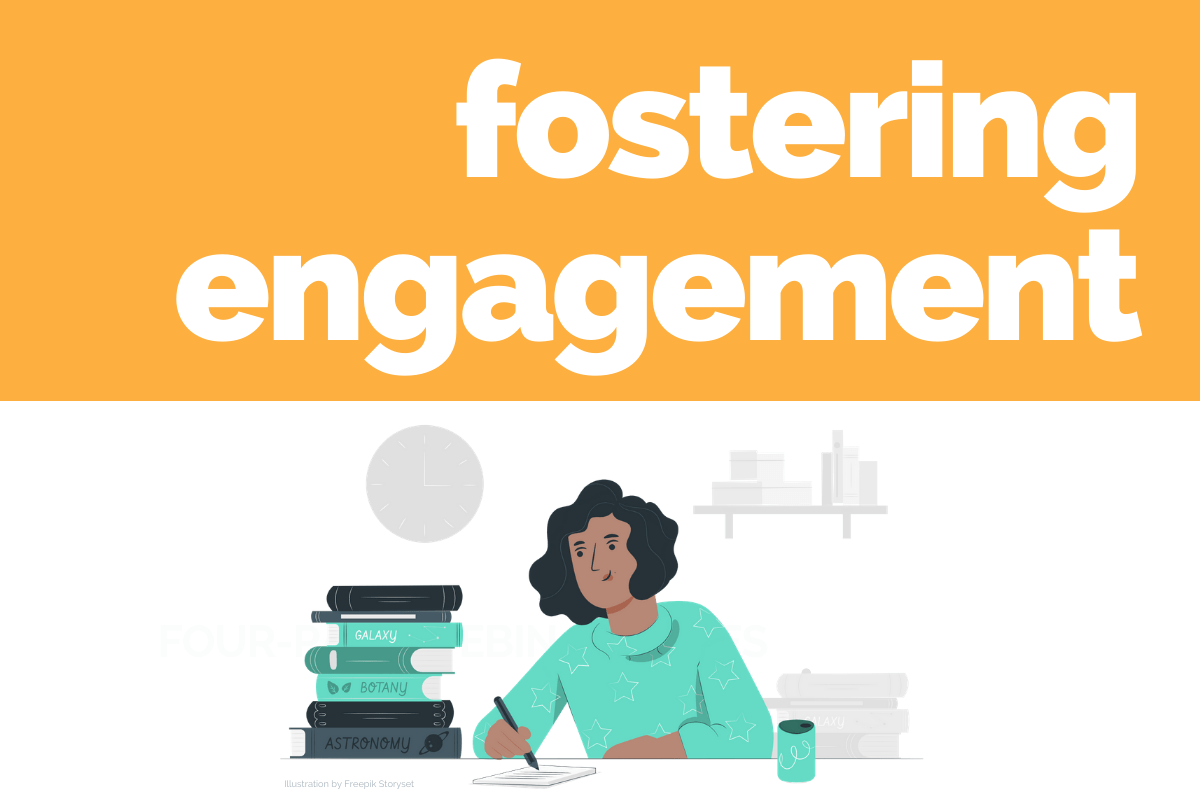
MY STUDENTS JUST DON’T CARE!

We’ve all been there, right? Well, I’ve certainly been there!
From little to no class participation and careless work to disruptive behaviors and failing grades, we know a disengaged student is a student who is not learning.
In the past year, concern has risen over low student engagement as virtual and hybrid learning has distanced students from each other and familiar learning experiences.
WHY ARE STUDENTS DISENGAGED?
First off, if there was one simple answer to this, I would be screaming it from the rooftops (i.e. the internet) and we would have classes full of happy, motivated learners. However, there are scores of factors influencing student motivation. Some of these are within our sphere of influence and some are entirely out of our control. Additionally, this puzzle is different for every student, so the one-solution-for-all approach just isn’t going to work.
What we can do, however, is turn to research and identify the areas we CAN influence. We know the concept of BELONGING has a significant impact on student motivation and engagement.
BELONGING
Students need to feel they belong in the classroom environment and that their own personal identity aligns with class experiences and expectations. When walking into the classroom (or entering a virtual classroom), students need to feel that “people like me can succeed here.”
Connected to belonging is the concept of affinity–students need to like each other. Research from Florida Atlantic University (Hartl et al., 2015) found that higher peer affinity increases task completion, speed of learning, and exploratory behavior. Essentially, they found that liking promotes learning.
So, what can we do to build a sense of belonging and increase a sense of closeness and rapport with and amongst our students?
MY FUTURE SELF ACTIVITY
This activity is adapted from Dave Stuart Jr’s first day of school index card activity. A common first-day-of-school (or semester) activity involves students writing about themselves on an index card. While this can be helpful in getting to know students, Dave points out that it isn’t necessarily helpful in creating positive self-identities. If we want students to feel like they belong in our math class, for example, their own personal sense of identity needs to fit as well. So, if a student describes herself as “I’m bad at math” and “I like basketball” in her personal descriptions, she still isn’t envisioning herself succeeding in your Algebra class.
Instead, have students write about who they WANT to become. How do they want to describe themselves in the future? How might they want their friends and family to describe them six months from now? A year from now? Five years from now?
With this activity, “I’m bad at math” might turn into “I will be better at math” and “I like basketball” might become “I’m good at basketball.” Now, students are creating a positive vision of themselves: “This might not be who I am today, but I’m working to become this in the future.”
In this activity, students could write, draw, create word art or a vision board around their future self-identity. The more opportunities to think about, create, and reflect upon this positive vision, the more likely it will become internalized.
Consider posting these in the classroom as well. This provides a visual reminder of who students want to become while building a classroom culture of learners.
Bonus points–do this activity along with your students! This supports students’ belief and trust in their teacher. You are growing and learning right alongside them!
WHAT’S NEXT?
This strategy and many more are part of our Fostering Engagement Series. You can get six more strategies for building engagement HERE!
Or, go deeper and learn over 20 engagement strategies in our four-part webinar series. Learn more at cbdconsulting.com/engagement.



